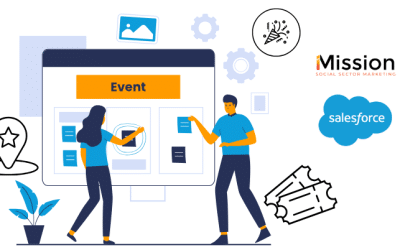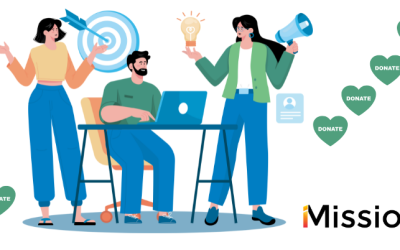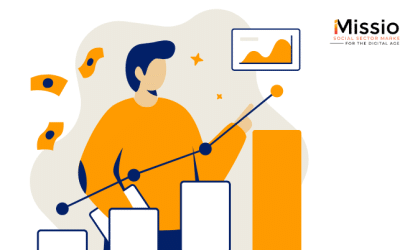The largest nonprofits in the U.S. could make the Fortune 500. These organizations command multi-billion dollar budgets and massive resources, and they have become household names: The United Way, Habitat for Humanity, and The Red Cross.
Organizations of this size have deep pockets for marketing and outreach, and they rely on their name recognition and well-established identity. They are trusted, highly-regarded brands, and this, in turn, helps them fundraise, build partnerships, and continue to grow.
And then there is everybody else.
According to The Urban Institute’s most recent survey, there are roughly 1.8 million nonprofits in the U.S., and the vast majority operate with an annual budget of less than $500,000.
For most nonprofits, resources are scant, and every marketing dollar must be spent wisely.
To engage a full donor pool, nonprofits use marketing automation software to keep up their engagement with donors so their funding keeps rolling in.
Marketing Every Stage of ‘The Donor’s Journey’
It’s tempting to think of marketing as a broad-minded approach that’s focused on building awareness with the largest audience possible. And while building awareness is a vital part of marketing — you need people to know you exist, after all — it’s equally important to build urgency so that the people who already know you exist are compelled to give.
This is full-funnel marketing, and to do it effectively you need some technological assistance.
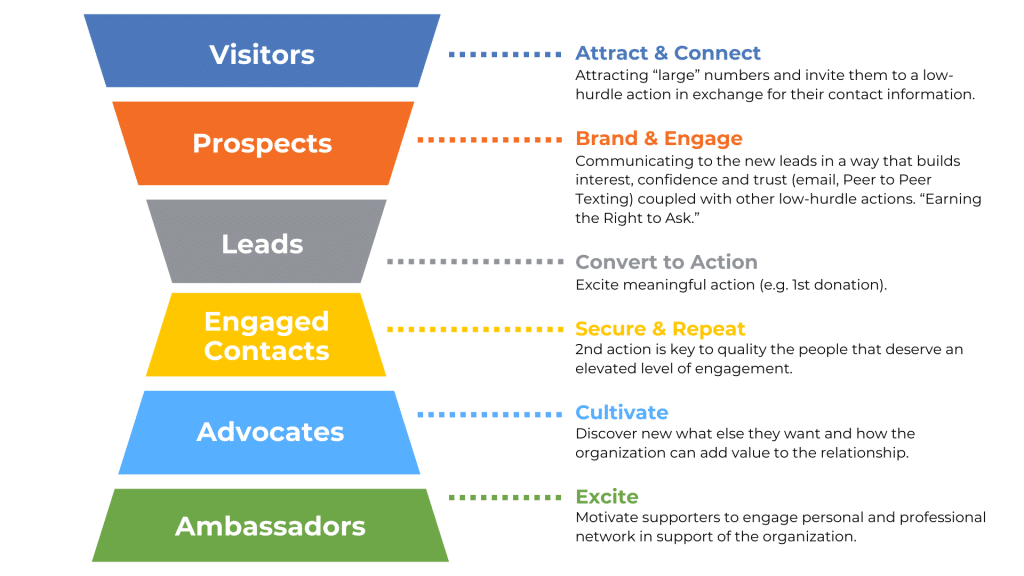
Marketing automation can help you with:
- Broad, audience-building efforts (think: scheduling social media posts)
- Steady engagement tactics (think: sending out your weekly newsletter)
- Workflows that target visitors who complete certain actions (think: sharing a viewbook when someone fills out a form)
And a whole lot more.
Automation tools like HubSpot, Salesforce’s Marketing Cloud, and Mailchimp Automation can help you engage with a wide range of contacts, from top-of-the-funnel unaware prospects to current and past donors.
Here’s what that looks like in practice.
Marketing Automation for Nonprofits
Modern digital marketing platforms offer a range of tools to help you do your job better. With the rise of AI, these tools are getting even more user-friendly every day. With that ease, though, comes the danger of inauthenticity. An automated communication that feels inauthentic can do more harm than good for your brand.
With that caveat, here’s how you can use marketing automation for nonprofit outreach and engagement.
About iMission Institute
iMission Institute is a leading agency helping nonprofit organizations select, launch, and manage their marketing automation applications. We are a registered Salesforce Consulting Partner specializing in social sector marketing and fundraising. To discuss how marketing automation can best meet the needs and aspirations of your organization, please contact us.
Automation Tools
CRM and Automation Systems
Many nonprofits use Customer Relationship Management (CRM) systems to collect contacts and manage all donor information. The CRM is the single source of truth for the organization, tracking all engagement for each donor.
Marketing automation tools integrate with CRM systems, ensuring that donor data is up-to-date and synchronized across platforms.
Automation Tactics for Fundraising
Email and Text Campaigns
Email and text message campaigns are the core of marketing automation, and nearly everything else falls under this umbrella.
Wherever a contact is in their giving lifecycle, an email or a text message can be impactful: as a thank you for a donation, as an update on a recent campaign, or as a digital packet of information ahead of an event, to name a few.
Whatever the situation, automated email marketing, and SMS texting campaigns can be set up to deliver timely messages to donors and supporters.
But perhaps the most valuable use of email automation can be to remind past donors of the importance of donating again. These so-called LYBUNT donors (those who gave last year but unfortunately not this year) are a vital group that can be reengaged with the right email campaign.
Segmented Communication
Nonprofits can segment their donor and supporter lists based on various criteria such as donation history, demographics, and interests.
These segments allow you to send targeted messages and appeals to specific groups and specific times, making outreach feel more personal and timely. And, on top of that, your automation platform can notify your team when a contact moves into a new segment based on actions taken (or not taken).
Other types of engagement, (clicks, email opens, social follows) can be factored into a scoring system, even if the data comes from a third-party source.
Social Media Automation
Nonprofits can schedule and automate social media posts to maintain a consistent online presence. Some automation platforms do this natively, but additional tools like Sprout Social and Shield are well-regarded and offer advanced functionality and insight.
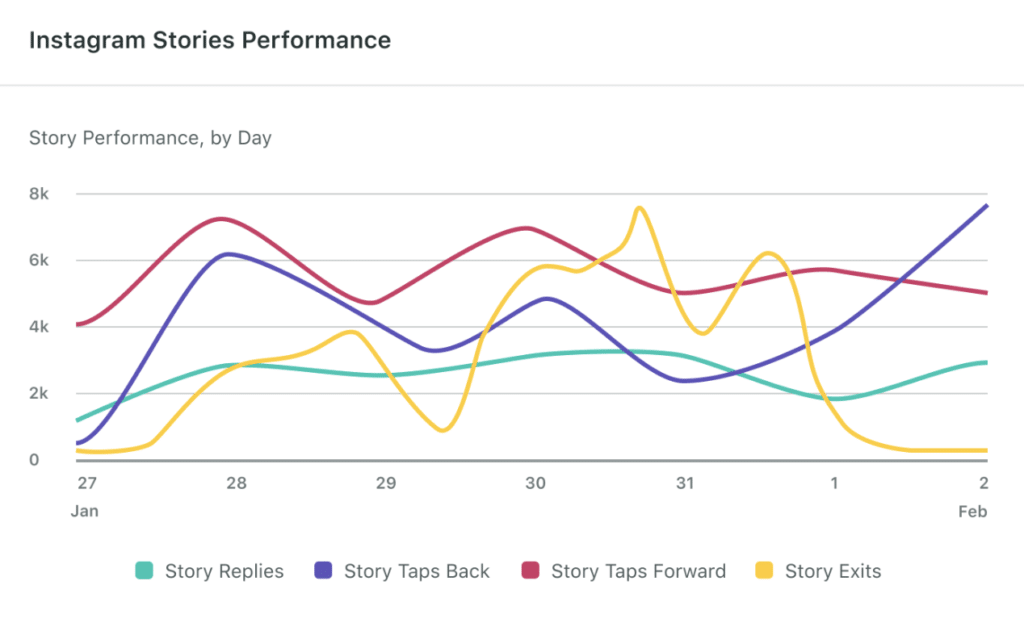
(Source)
Social media presence is crucial for spreading awareness about fundraising campaigns and engaging with supporters, but it’s important to know where your core audience spends time online. If you spread yourself too thin, you might fail to make waves.
Event Promotion
Whether you’re planning a black-tie gala or a local trash cleanup, you need your audience to show up to your event.
Marketing automation can be used to promote nonprofit events through targeted email and SMS text campaigns, social media posts, and event registration management.
Automated event reminders and follow-ups can also boost attendance, donations, and post-event communications.
Lead Nurturing
Not every future donor who enters your database is ready to give right away. Some potential donors may have engaged with your content and expressed interest in your cause but have not yet donated. In these cases, marketing automation can help you slowly build a relationship in a way that’s appropriate and not too fast.
Lead nurturing (the process of establishing a relationship) could look different depending on your needs, but automated follow-up emails with the right content will keep these leads in the fold — and help them eventually turn into donors.
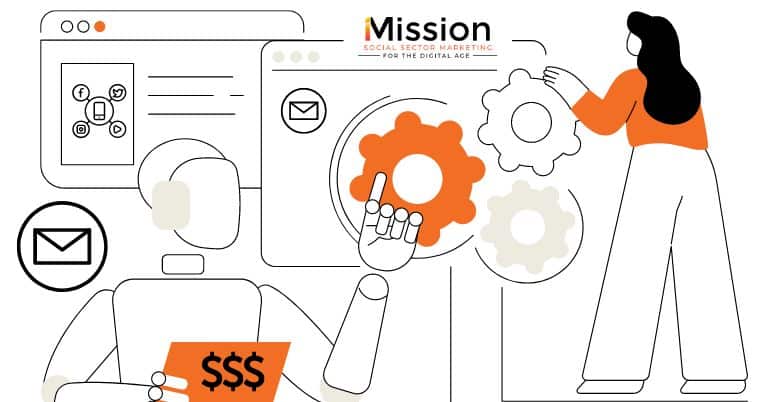
Automation Data and Insights
Marketing automation platforms perform tests and collect data that can help you improve your outreach.
Data Analysis and Reporting
Marketing automation platforms give aggregated insights into donor behavior and campaign performance. KPIs (Key Performance Indicators) like open rates, click-through rates, conversion rates, and other metrics measure the effectiveness of your fundraising efforts.
Use benchmark data from past actions or other nonprofits to evaluate your campaigns, and then work to improve the metrics that matter most.
A/B Testing
Not sure what subject line to go with? Which email copy is best? Which layout will resonate? Test both! A/B testing allows you to isolate and assess a single variable.
Automation platforms have testing capabilities, which you can change to suit your needs.
For example, say you’re hoping to boost the open rates of your newsletter, so you want to tweak the subject line. Run an A/B test in which 20% of your audience receives Option A, 20% receives Option B, and the final 60% receives whichever option outperformed the other.

(HubSpot’s A/B Test template)
Better engagement means better results, and testing lets you fine-tune your marketing efforts.
Donor Journey Mapping
The path toward philanthropy can be long and sinuous, so many nonprofits create donor journey maps to plan and automate donor interactions.
As site visitors become contacts, or contacts become leads, their relationship to your organization changes. When you map that journey and understand what decisions have to take place for someone to move from one stage to the next, you can deliver tailored content and messages at each stage.
Your message, your donors, your growth
Whatever your mission, whatever your size, whatever your donation process, automation software gives you the tools to engage your audience with the right content at the right time. On top of that, you get whole dashboards of relevant data to help you improve your future efforts.
Most platforms and tools have sliding scale pricing — along with discounts for nonprofits. And a raft of tutorials and walkthroughs can help you get started.
Want more hands-on assistance? Reach out to talk with one of our experts.
- Marketing Every Stage of ‘The Donor’s Journey’
- Marketing Automation for Nonprofits
- Automation Tools
- Automation Tactics for Fundraising
- Automation Data and Insights
Marketing automation will let you find new donors, volunteers, and clients – and more quickly and successfully move them to action. Our Ultimate Guide to Marketing Automation for Nonprofits shows you, step-by-step, how your organization can take your marketing to a whole new level.

About iMission Institute
iMission Institute is a leading agency helping nonprofit organizations select, launch, and manage their marketing automation applications. We are a registered Salesforce Consulting Partner specializing in social sector marketing and fundraising. To discuss how marketing automation can best meet the needs and aspirations of your organization, please contact us.

